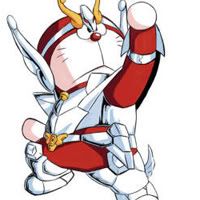Anime, Manga, and All Things Otaku: Japanese Doujinshi Artist JohnHathway
Thursday, June 4, 2009
I spent yesterday touring Harajuku and Akihabira, Tokyo, Japan, with Patrick Galbraith, a doctoral student at ToDai who is conducting an ethnographic study of otaku culture. Patrick is astonishingly knowledgeable but, even more impressive, he manages the difficult ethnographic trick of perspective and attachment, the "Hop on Pop" or "Aca-Fan" model of admiring and being apart of that which one also writes about and analyzes. It's a very difficult balancing act and he does it superbly. Thank you, Patrick, for an utterly unforgettable day of art, fashion, music, technology, digital innovation, history, sociology, economics, culture, and deep appreciation of otaku culture.
For a part of our day, we were accompanied by JohnHathway, the pseudonym of a stunningly original and talented physics graduate student who devotes himself to the most painstaking kind of anime, where he layers literally thousands upon thousands of layers of images, using Adobe computer photoshop layering, to produce a final image that he then sells in self-produced manga. You can find his work at http://mots.jp. You can buy it, you can tell your friends.
Of course JohnHathway-sama's work has the familiar big-eyed sexy girl-women, but there is also a Bosch-like representation of the city that, when you see the animated version, is where he begins, with the architecture, slowly accreting and building up layers and layers and layers and LAYERS (more and more and more and more) until it is a whole urban cityscape with flying witches and demons and lovely lolitas on militaristic broomsticks, utopic and dystopic in such combinations one continues where the other ends.
One of my favorite things on JohnHathway's website is the video of the professor (he said it was his father) showing the physics of the little manga girl's pigtails, the absolutely perfect angle from which pigtails should fall from the head. Hilarious. And the manga version comes complete with all the algorythms.
What intrigues me about JohnHathway is not only the brilliance and originality of his art but the brilliance and originality of his life. I interviewed him for the book I am doing on cognition and digitality, and specifically for the section on how rational choice economic theory simply does not apply to many forms of contemporary digital culture, DIY work where the economic rewards are far less significant than some kind of membership in community. I may post later on the many different examples of this that we saw as we toured myriad (dozens!) of different kinds of outlet for doujinshi (amateur fan-based and fan-created art).
JohnHathway is such a doujinshi, and, if he can make it as an artist, he won't have to become a saraiiman, but will remain an artist, painstakingly creating these masterpieces that he now sells for about the equivalent of five or ten bucks for the manga, with full stories of the worlds he creates.
Why? Because he loves it. Where does that fit in rational choice economic theory? What is the role of the hobby? That's the question. But, instead of an answer, I'll simply reproduce one of JohnHathway's images and hope that you will click through to his website and maybe even buy one of his mangas and tell your students, tell your friends
http://kesananh.net
http://hocanhvan.info









0 comments: to “ Anime, Manga, and All Things Otaku: Japanese Doujinshi Artist JohnHathway ”
Post a Comment